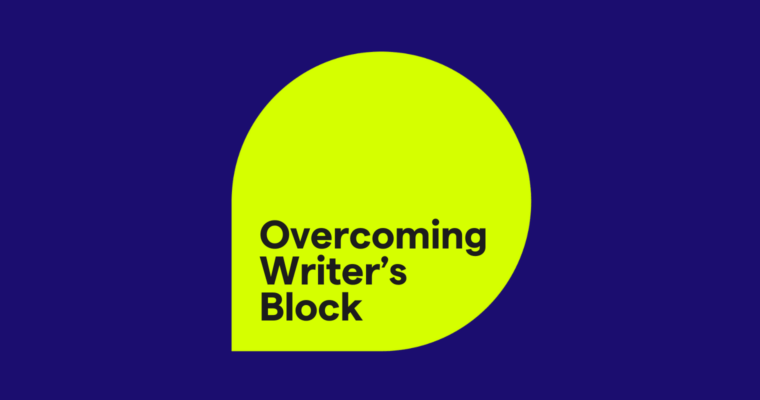
When you hear a catchy tagline for a new product or come across a social media ad that makes you laugh or compels you to share it, you’ve encountered effective copywriting.
The goal of copywriting is to elicit an action from an audience using text. A copywriter is a professional who’s responsible for achieving this goal through words.
What is copywriting?
Copywriting is a form of persuasive writing that businesses use in marketing materials and assets. Its intent is to encourage readers to take the leap toward a specific action using artfully crafted messaging, called “copy.” Typically, the goal is to motivate a reader to make a purchase or buy into an idea.
Examples of copywriting are everywhere, such as on the packaging of your favorite products, in a brand’s signature catchphrase, and in retail stores’ email promotions and ads.
What does a copywriter do?
If you’re looking for a writing career that marries business objectives with creative writing, copywriting might offer the right balance. Copywriters are professional writers who are tasked with writing compelling copy for a variety of marketing assets and campaigns.
When working on a copywriting project, they must research the product or idea, which may include interviewing customers and experts and performing competitive copy analysis.
With this foundational knowledge, they draft multiple versions of their copy to hit the particular marketing objective, collaborating with internal brand stakeholders throughout the process. Each revision of the draft is intended to refine the copy to make it so unique and engaging that it turns a consumer into a customer.
When is a copywriter needed?
Copywriting is pervasive in all areas of marketing, regardless of the business or industry. For example, it’s used in traditional media when writing the script for a TV commercial, as well as in print ads and on billboards. The words you read and hear in marketing materials are copywriting in action.
Similarly, copywriting is used in new media, including the text for on-site banner ads and the messaging in social media ads and email marketing.
It’s also used for product descriptions, website copy, multimedia descriptions, and other business marketing text.
Copywriting vs. content writing
Copywriting jobs differ from content writing in their intention. The purpose of copywriting is to sell something or encourage the reader to take a desired action. This action might be purchasing a product, selling an idea, filling out an online form, or signing up for a paid webinar.
Content writing, whether blog writing or SEO writing, is designed to create awareness, educate, inform, or inspire readers. Content writers tell stories through longer-form copy, like an online article, white paper, ebook, or case study.
In writing, content writing is often considered “top of funnel,” which means it’s meant to attract broad sales leads by developing trust with the reader over time. Generally, copywriting is used to “close the deal” at the bottom of the sales funnel with messaging that prompts targeted readers to take the final, desired action for a sales conversion.
What skills does a copywriter need?
To become a copywriter, you must have a strong writing foundation. However, you’ll also need other skills:
- Communication
- Analytical reasoning
- Problem-solving
- Creative thinking
- Research and interviewing
If you need to fine-tune some of the skills above, reviewing the top copywriting resource books might help.
Copywriting examples
Below are some examples of successful copy across various industries, and each is effective for different reasons.
Asana: Clear value proposition
The copy that’s written for Asana’s product page is effective because it offers a clear, straightforward value proposition to its readers. In reading the tagline and brief description on the page, potential clients and customers understand these two things:
1 What Asana is. It’s “the easiest way to manage team projects and tasks.”
2 How Asana helps them. It offers features to help teams “stay in sync, hit deadlines, and reach their goals.”
Ricola: Concise storytelling through humor
Ricola, a cough-drop brand, hit the mark with its succinct, but comical, copy that illustrates how an untimely cough can change the meaning of a statement.
In five words, readers immediately recognize how a “cough” could inadvertently imply that the relationship might be more than platonic.
“She’s (cough) just a friend”
Fortunately, Ricola keeps involuntary coughs out of the conversation so that you ensure your “good news sounds like good news.”
Cards Against Humanity: On-brand voice
Cards Against Humanity keeps its copy on-brand. In all areas of its marketing assets, such as its product packaging copy and the FAQ section of its website, here cast as “Your dumb questions,” it creates witty copy that disparages itself, its customers, and, well, humanity.
And this copy is effective because it serves customers exactly what they expect from the brand: audacious messaging that doesn’t take itself seriously and is meant to entertain.
Copywriting FAQs
What is copywriting?
Copywriting is a form of persuasive writing that’s used in marketing campaigns and assets. The text, which is called “copy,” is crafted to create awareness or provoke an action, such as making a purchase or enrolling in a course.
What does a copywriter do?
A copywriter is a professional who’s responsible for writing compelling messaging that’s used in marketing material, such as an online advertisement, product pamphlet, or commercial script.
What skills does a copywriter need?
A copywriter must be a creative thinker and have a keen understanding of a company’s brand and target audience, in addition to having strong analytical, communication, problem-solving, and technical writing skills.






